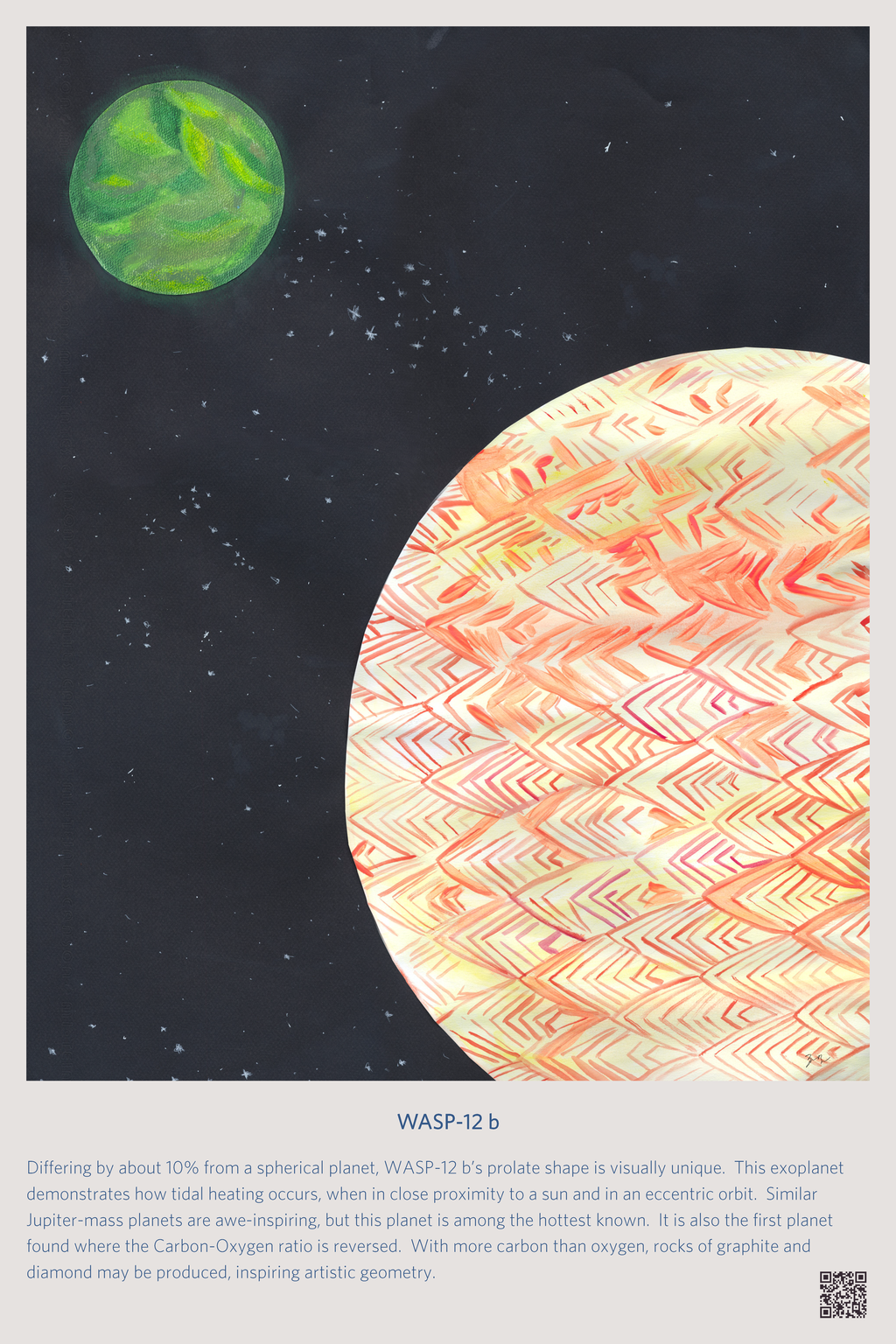 |
WASP-12 bDiffering by about 10% from a spherical planet, WASP-12 b’s prolate shape is visually unique. This exoplanet demonstrates how tidal heating occurs, when in close proximity to a sun and in an eccentric orbit. Similar Jupiter-mass planets are awe-inspiring, but this planet is among the hottest known. It is also the first planet found where the Carbon-Oxygen ratio is reversed. With more carbon than oxygen, rocks of graphite and diamond may be produced, inspiring artistic geometry. MediumWatercolor on Paper ArtistEva Bod ’20 Curated ResourcesWASP-12 b, Exoplanet Catalog, Exoplanet Exploration, NASA WASP-12 b, Eyes on Exoplanets, Exoplanet Exploration, NASA “Your Guide to Exoplanets,” The Planetary Society “The Different Kind of Exoplanets You Meet in the Milky Way,” The Planetary Society |
 |

